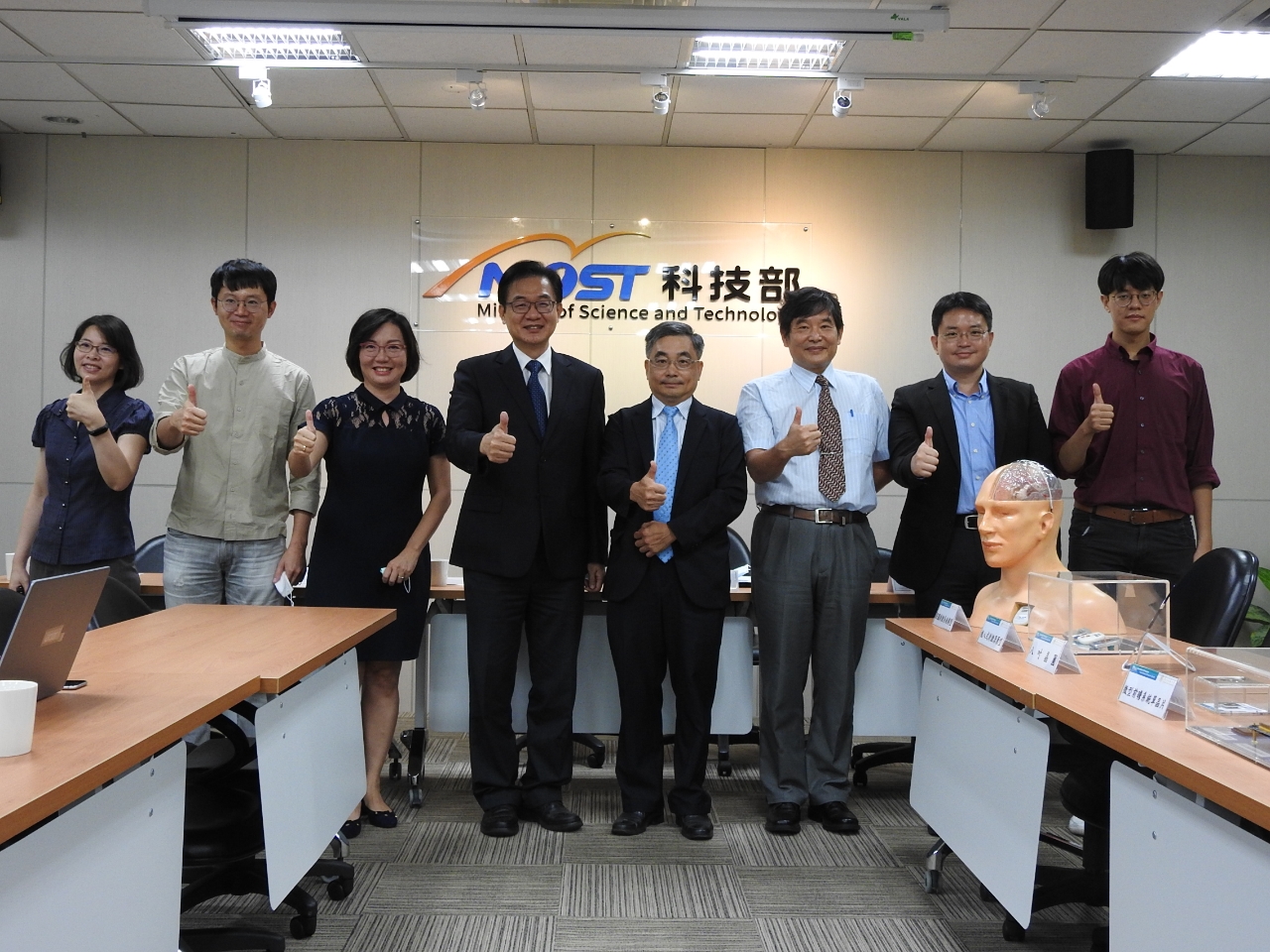The demographic structure of global population is accelerating towards aging society. How to improve the quality of life of the elderly is an important problem that we are going to deal with it. Under the "5+2 Industrial Innovation Plan" policy, the Ministry of Science and Technology (MOST) has promoted the "Taiwan Brain Technology Development and International Rising Program" since 2019. Through cross-field integration of Taiwan’s high-quality R&D energy in the fields of information and communication technology, machine control, clinical medicine, and humanities and social sciences, the program enhances brain technologies and facilitates the development of Taiwan’s biomedical industry in the field of big data, smart health, precision medicine, health and well-being.
Parkinson's disease is a common neurodegenerative disease among the elderly. The course of Parkinson's disease is very long. Long-term use of levodopa drugs is prone to cause dyskinesia, i.e. uncontrolled muscle movements, or motor fluctuation, i.e. sudden changes in movement control, which seriously affect the quality of life of the patients. Patients with advanced Parkinson's disease may choose the deep brain stimulation, which involves implanting electrodes in the brain through surgery, and using high-frequency electrical stimulation to treat Parkinson’s disease and alleviate drug-induced adverse effects, and improve the quality of life of Parkinson’s patients. However, the conventional deep brain stimulation delivers continuously electrical stimulation, which has disadvantages such as excessive power consumption and prone to cause stimulation-related side effects. Therefore, there is still much room for improvement in terms of efficacy and side effects control.
With the support from "Taiwan Brain Technology Development and International Rising Program" of the MOST, Professor Ming-Dou Ker of the Institute of Electronics, National Chiao Tung University, and also director of the Biomedical Electronics Translational Research Center of National Chiao Tung University, and the attending physician Chiung-Chu Chen of the Department of Neurology, Linkou Chang Gung Memorial Hospital, formed a cross-disciplinary research team. They developed a "prospective miniature system-on-a-chip" using TSMC semiconductor process, which was applied to develop the latest "intelligent adaptive deep brain stimulator". Adaptive deep brain stimulator can deliver electrical stimulation based on the unique pathological signals in the brain of individual Parkinson's patients. Through the feedback control algorithm, it can deliver the required electrical stimulation on the basis of highly efficient and intelligent integrated circuit design to achieve the optimal therapy for Parkinson’s patients.
The key of this new treatment technology lies in the fact that the research team at Linkou Chang Gung Memorial Hospital and the University of Oxford in the past few years have analyzed the deep brain signals of Parkinson’s patients and found pathological biomarkers related to the disease. Through the guidance of these unique pathological biomarkers, the best timing for electrical stimulation can be determined according to the different clinical symptoms of the patient, to enhance the efficacy, reduce side effects, and achieve precise treatment of Parkinson’s disease. In addition, it has recently been reported that the pathological signals recorded during the deep brain stimulation surgery can predict the long-term effects of the surgery and the subsequent emotional changes of the patients. These results contribute to the personalization and precision of deep brain stimulation.
The use of pathological biomarker as feedback control signal is the trend of the next generation of deep brain stimulation. So far the international research is using bulky external device to carry out the tests. It is necessary for patients to wear miniature device for testing the adaptive deep brain stimulation chronically. The miniaturization of deep brain stimulator can be achieved by system-on-a-chip technology. The "prospective miniature system-on-a-chip" developed by Professor Ker's team integrates analog front-end amplifiers, analog-to-digital converters, digital signal processors, adjustable multi-channel electrical stimulators, wireless transmission and power management and other circuit functions. This system-on-a-chip is produced by the TSMC semiconductor process which reducing the size of the chip to be smaller than a rice grain, and greatly reduces power consumption and improves computing performance. At present, the production of system-on-a-chip has been completed (Figure 1). The system-on-a-chip will be used as the core to build a "intelligent adaptive deep brain stimulation system", and animal experiments using minipigs will be conducted to verify safety and functionality. After passing relevant certifications such as safety inspections, it is expected that the clinical trials will be applied at the end of this year to verify the efficacy of this new system on patients.
Figure 1. The prospective miniature system-on-a-chip produced by TSMC semiconductor process. (Note)
The "intelligent adaptive deep brain stimulation system" developed by this project is applicable for specifications of human use. It perfectly combines Taiwan's advanced semiconductor integrated circuit technology with excellent medical expertise, and makes full use of Taiwan's advantages. The MOST will use the robust innovative energy to promote the "Taiwan Precision Health Strategy Development Plan" across the ministries, develop the world's first forward-looking technology, and provide a beacon of neurological precision medicine, which is also the future of Taiwan's biomedical electronics industry.
Note:
NSA-AFE: Neural Signal Acquisition Analog Front-End
ADC: Analog-to-Digital Converter
DSP: Digital Signal Processor
OSC: Ring Oscillator
WirelessTRX: Wireless Transmitter
PMU: Power Management Unit
Author Information:
Ming-Dou Ker, Distinguished Professor
Professor Ming-Dou Ker, a professor in the Institute of Electronics, National Chiao-Tung University, is also the director of the Biomedical Electronics Translational Research Center (BETRC). The mission and vision of BETRC is to "treat intractable neurological disorders by conducting interdisciplinary research to develop multidisciplinary technology platform." This center can hopefully become a research platform for gathering experts and engineering teams in all disciplines to research and develop innovative technology for medical devices.
Media Contact
Prof. Ming-Dou Ker
Institute of Electronics, National Chiao-Tung University
Biomedical Electronics Translational Research Center (BETRC)
TEL: 03-5712121 ext.59450
Email: mdker@mail.nctu.edu.tw
Dr. Hui-Hsin Lee
Department of Life Sciences, Ministry of Science and Technology
TEL: 02-27377461
Email: hhlee@most.gov.tw

